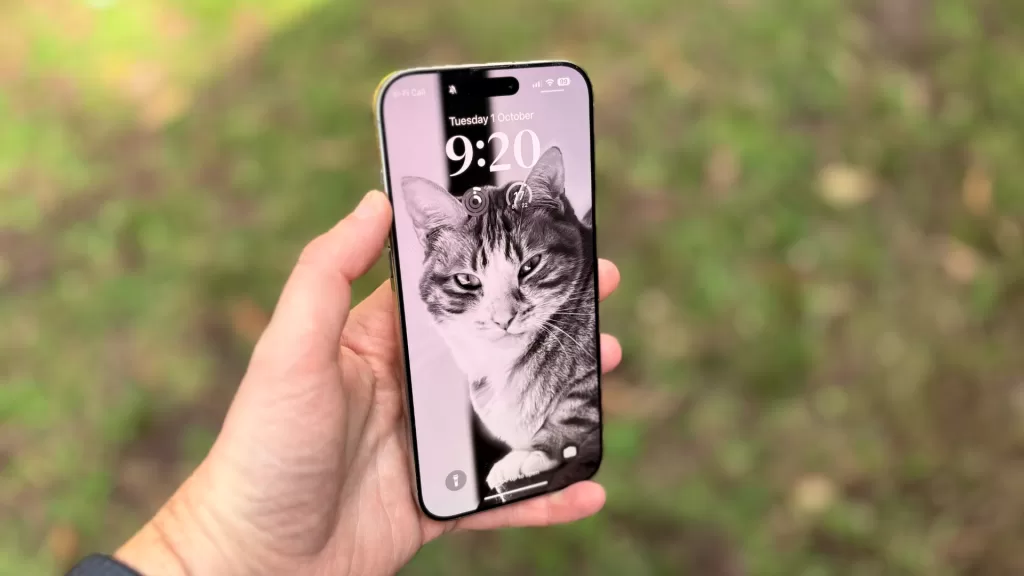
The iPhone 16 Pro Max is bigger, better and faster than prior iPhones, but it’s also undeniably expensive – and that might make the regular iPhone 16 the better buy.
| Pros | Cons |
|---|---|
| A18 Pro is a BEAST | It’s a BIG phone to handle |
| Great Camera performance | Camera Control can be awkward to use due to size/positioning |
| Good battery performance | It costs a LOT. And then a bit more. |
Score: 4/5
 |
Buy The Apple iPhone 16 Pro Max! | Buy On Amazon |
In this review
Apple iPhone 16 Pro Max Specifications
Apple iPhone 16 Pro Max Design
Apple iPhone 16 Pro Max Camera
Apple iPhone 16 Pro Max Performance
Apple iPhone 16 Pro Max Battery
Apple iPhone 16 Pro Max Conclusion
I’ve been reviewing iPhones in Australia ever since the iPhone 3G landed on our shores in 2008 – we never got the original 2G-only model here officially – and over the years, there’s been models that have impressed me with genuinely new approaches that made them interesting, while other years were more of a predictable speed bump best picked up by those updating from older models.
Ask Apple, and I’ve no doubt that… they won’t officially comment on the record, because Apple’s like that, but if you read the marketing blurbs they’ll always be talking up the levels of innovation, wonder and magic in every iPhone. To an extent that’s true; I’m sure there’s all kinds of interesting engineering that goes into making particular thicknesses of phone, or working on heat dissipation, and of course there’s Apple’s own exemplary A-series mobile processors to throw into the mix.
Still, what really matters is whether a given iPhone generation is a real “can’t miss” prospect, or if it’s better served for those simply updating from a prior generation. While Apple’s thrown some interesting ideas at the iPhone 16 Pro Max, I suspect it’s best served towards those who want a larger iPhone with the best cameras Apple can make… but who are jumping up from at least a few iPhone generations prior – and even then, many may be better served with the iPhone 16 instead.
Design
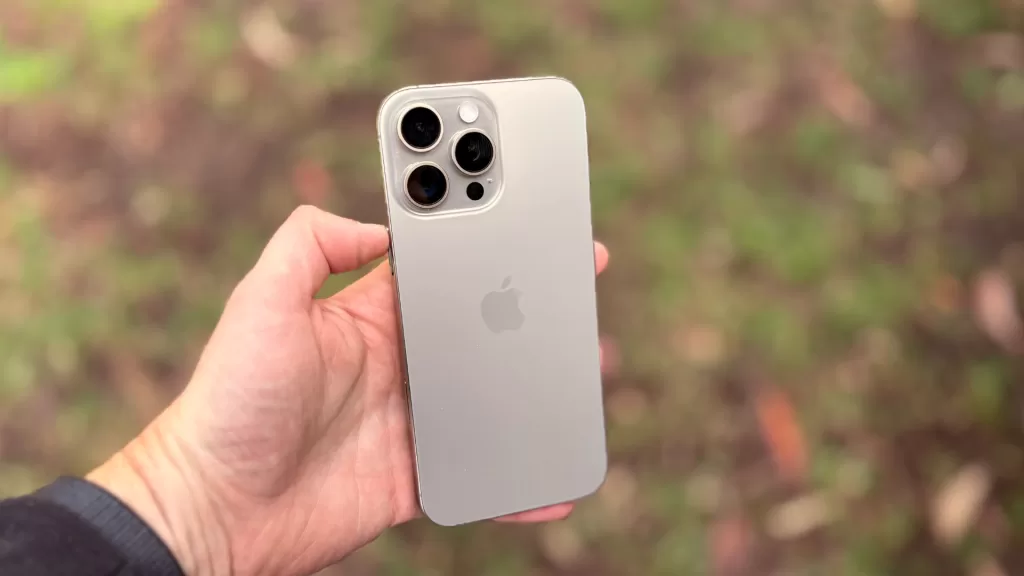
Apple’s Pro line of iPhones for 2024 encompasses the iPhone 16 Pro and iPhone 16 Pro Max, the largest of the iPhone family to date.
It’s a big phone, measuring in at 163x77.6x8.25mm and weighing 227g in the hand. There’s a lot to heft here, and as always I’m going to advocate for you buying a phone case if you do purchase one, because they’re a sensible protection investment.
Apple supplied me with a Magsafe compliant case for the purposes of this review, but one isn’t supplied in the box. The catch there that I truly do appreciate on a phone this large is that adding a case makes it an even load to carry around or slip into a pocket.
The iPhone 16 Pro Max has the largest display of any iPhone to date, with a 6.9 inch 2868x1320 pixel 120Hz (“ProMotion”) screen with absolutely minimalistic bezels and Apple’s “Dynamic Island” FaceID camera notch at the top. It’s a genuinely great screen, but then given the iPhone 16 Pro Max’s asking price, it absolutely has to be. Apple’s claim is that the new tweak here is the ability for the screen brightness to drop to as low as 1 nit in the right circumstances, saving battery life where extra brightness isn’t needed. I haven’t had noticeable problems with screen visibility during my review period, even in direct sunlight.
The iPhone 16 Pro Max comes in your choice of four “Titanium” colours. Specifically that’s Titanium White, Titanium Black, Natural Titanium and Desert Titanium.
Desert Titanium amuses me as a name – I can only imagine some kind of titanium clad rodent being hunted for its metal through the sand dunes – but the naming isn’t just lip service, with each model clad in theoretically more durable titanium frames. No, I didn’t “test” them with a sledgehammer to see just how durable, though that didn’t stop some folks from suggesting I should.
The iPhone 16 Pro Max is otherwise near identically styled to prior iPhone Pro Max generations, with the exception of the new Camera Control button on the lower right hand side of the phone. It’s designed as a camera shutter button when fully pressed, or an interactive control with half-presses to adjust focus by default, or with a range of camera options with a double half-press.

This might not be that popular observation, but I feel like the Camera Control is mostly a gimmick, especially on the iPhone 16 Pro Max. The larger size of the phone makes it awkward to use, and it’s simply replicating controls that are available in standard iPhone camera apps anyway.
More than once when I’ve wanted to adjust a shot parameter I’ve taken accidental photos, and it all ends up feeling more slow and awkward than a direct controls should be. Apple’s opening up the Camera Control to third-party apps, and maybe someone will come up with something actually compelling for it in due course – but right now on the iPhone 16 Pro Max I’m not a huge fan.
Camera

The big hook for Apple’s Pro Max iPhones has long been its camera array, though Apple made the interesting – and quite welcome, I think – choice to put the same cameras in the iPhone 16 Pro as the iPhone 16 Pro Max. That’s not what it did for last year’s models, but what that leaves you with is a primary 48MP wide lens, secondary 48MP ultra-wide lens and tertiary 12MP 5x Telephoto lens. FaceID and selfies are handled by the front-facing 12MP camera.
Put those specifications side by side with comparably priced (and many cheaper) Android phones and you might think that Apple’s taking the mickey, but then the quality of photo output is far more dependent these days on how a phone’s processor handles shot taking and post-processing than it is pure megapixel counts.
Here, the iPhone 16 Pro Max rather easily impresses. Naturally, its regular daylight shots are pleasing, not that you need a seriously pricey phone like this to get good daytime shots.

Talkie Toaster Approved Photo

Dreaming of mice, and the TERRIBLE things she would do to them.
The upgraded 48MP ultra wide lens can of course take landscape shots, but it also does double duty as a macro lens camera, and here it does some very nice work indeed.

Tip: Don’t use the camera control for Macro shots – it’s too easy to introduce shudder that way.
The other area that a premium smartphone camera needs to impress is with low light performance. When I first got hold of the iPhone 16 Pro Max, I took it for a little shootout battle against the Google Pixel 9 Pro XL:
Outside of deliberately brutal tests, the iPhone 16 Pro Max does well on more considered low light shots too:

You also get telephoto zoom, with native 5x optical and up to 25x hybrid zoom. That's less than Apple's Android competitors, many of whom opt for 30x hybrid zoom or for some models up to 100x, though the results tend to diminish in quality the further you push it.

While this shot isn't free from issues, it's pretty darned good for a handheld 25x zoom photo.
On the video front, there’s support for up to 120fps 4K video, as well as a post-processed audio setting that Apple calls “Audio Mix” that lets you choose from the standard microphones, or just the audio in the frame at the time, or studio mic settings, or a more cinematic feel. The differences here are quite remarkable – more than enough for shooting simple YouTube videos for example, though I don’t think they’ll be overtaking standard Hollywood microphone techniques just yet.
Does the iPhone 16 Pro Max live up to its Pro billing in camera terms? Very much so, though I am struck by the thought that it might be an even better package in the smaller iPhone 16 Pro form factor, simply because that would make the Camera Controls easier to manage, and the whole phone easier to handle for photographic duties.
Apple iPhone 16 Pro Max Sample Photos



Performance
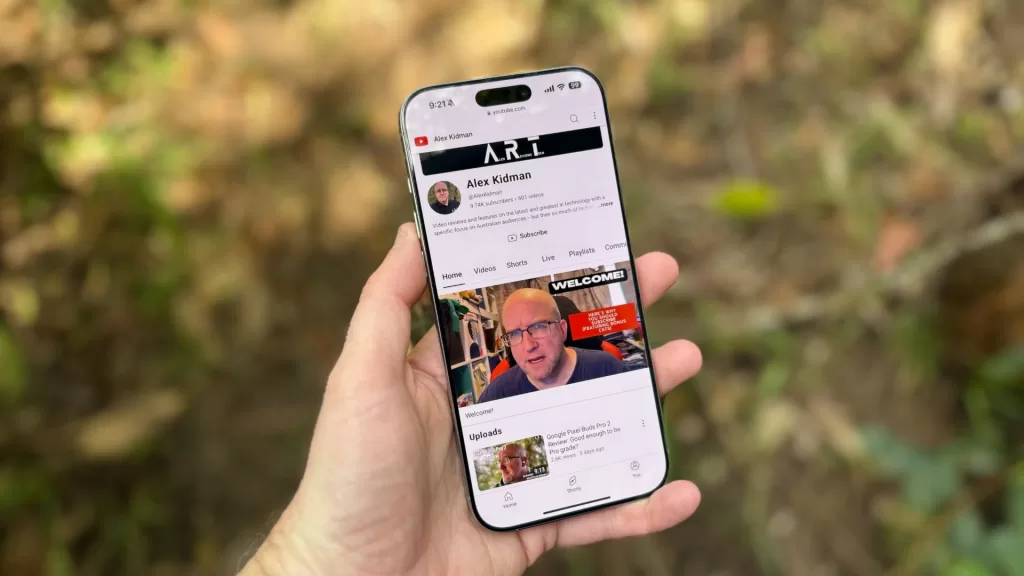
The iPhone 16 Pro Max is built around Apple’s new A18 Pro processor – distinct from the A18 found in the iPhone 16 and iPhone 16 Plus – paired up with 8GB of RAM and 256GB, 512GB or 1TB of onboard fixed storage. The model Apple sent me for review was the full-fat 1TB model, which would set you back a wallet-busting $2,849 outright.
That’s a lot to spend on a smartphone.
Sure, that feels obvious, but when phones are this expensive, I feel the need to remind you of that, because you should expect top-tier performance if you’re paying top-tier prices, even if Apple did surprise me by slightly dropping prices year-on-year here in Australia.
It shouldn’t come as a surprise to many that the A18 Pro still leaves its competition in the dust in straight line CPU benchmarking terms, because that’s been the case for quite some time now when comparing Apple and Android phones that way:
I’m not so sure that this is all that useful a comparison, however, because by now a lot of folks have drawn their own lines in the sand, and would never consider either an Android or Apple phone to speak of. So what if you’re looking at the iPhone 16 Pro Max as more of an upgrade prospect? Here’s what that comparison looks like, with the note that (unfortunately) my older iPhone results are all from an earlier version of Geekbench – so the scores aren’t directly comparable:
On the GPU front, however, Apple doesn’t rule the roost – just. Here’s how the iPhone 16 Pro Max compares against its Android counterparts:
And again, how Apple’s GPU performance has scaled over time compared to prior generation models:
While the Samsung Galaxy S24 Ultra has the straight line GPU performance crowd, I’d argue Apple’s done a little more in pushing actual visuals in terms of bringing a range of AAA games to the iOS platform more generally.
It’s something of a double-edged sword of course; as I noted in my iOS review of the Resident Evil 4 Remake the smaller screen isn’t always ideal for playing more frenetic action games. Still, the end result is a nicely powerful phone, which once again should be assumed for this much money. I can’t help but observe, however, that the much less pricey iPhone 16 isn’t exactly lagging in either test that much further behind the iPhone 16 Pro Max.
The other aspect of the Apple iPhone 16 Pro Max’s selling proposition is one that I largely can’t test out at launch, and that’s Apple Intelligence. It’s 2024, and you can’t have a premium phone without shoving some level of AI into it, and in Apple’s case that’s “Apple Intelligence” (I see what you did there, Apple).
Apple Intelligence will eventually add functions for tidying up your written text, prioritising notifications and personalised Genmoji… but I say eventually, as it’s in Beta right now and won’t arrive at all for Australian users until at least December 2025. Apple’s approach does appear slightly more consumer-friendly than the more business-centric approaches of some AI out there, which might give it appeal, but right now, I have to treat it like it doesn’t exist… because it doesn’t exist yet. I wouldn’t rush to buy an iPhone 16 Pro Max for it, for sure.
On the networking front, the iPhone 16 Pro Max supports Wi-Fi 7, which is nice to see, but once again we’re being dudded on the 5G front, with support only for sub-6Ghz 5Ghz frequencies. Want full mmWave and sub-6Ghz? You’d have to import a US model, but in doing so you would have to eschew having a physical SIM card tray, as Apple’s gone eSIM-only for stateside iPhones. Still, it feels truly stupid and penny pinching to me that Apple could be including mmWave on what are truly premium-priced phones, but they simply don’t.
Battery
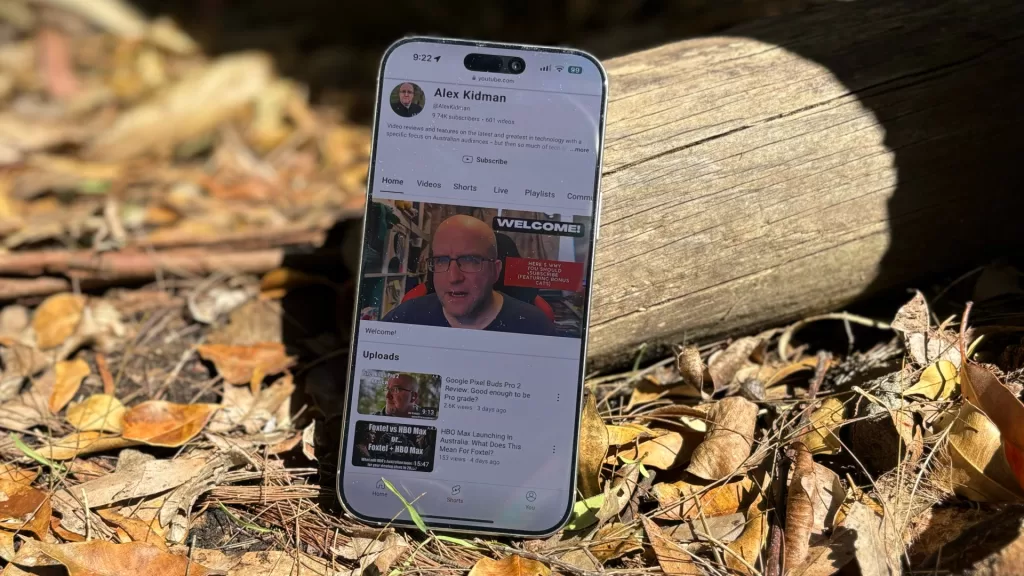
The iPhone 16 Pro Max is a big beast of a phone – we’ve established that already, no? – but Apple’s history has been one of making the most of battery efficiency rather than just packing in more battery cells per se. That’s why most iPhones have had smaller battery capacities than their Android counterparts while having broadly similar actual battery lives.
Apple doesn’t officially publish battery capacities for its phones, but digging around other sources reveals that the iPhone 16 Pro Max should be carrying a 4,685mAh battery pack, larger than any other iPhone to date. Clearly having a bigger body gave Apple’s engineers a little more room to move here, and they took it.
However, battery life is more than just a game of adding up the numbers, and to give that some comparative picture, I turn to my standard YouTube battery test. This runs a 1080p video at maximum brightness and moderate volume for an hour to measure relative battery performance. First up, how does the iPhone 16 Pro Max compare to its wider competition?
Pipped at the post there by the Pixels, though they’re running on markedly slower processors, so the iPhone would (or could) be doing more work there.
Again, I’ll also look at the wider and longer term iPhone-only comparisons, and here I have a lot more data to play with, showing how each phone has responded to this test. Keep in mind that this is from new; if you’ve got one of these older iPhones and have had it for a few years, you’d get worse results as the nature of battery chemistry means that they all degrade over time.
The iPhone 16 Pro Max isn’t the best performer in this sense, but it’s got nothing to be ashamed of either, with a solid 97% battery score. As always, battery life is absolutely ruled by what you do with the phone; on days where I’ve otherwise been busy it’s sailed through to the evening with loads of battery capacity left, but if I spend much of the day idling around playing higher-end iOS games or doomscrolling social media, it can go flat a little faster.
The iPhone 16 Pro Max supports USB-C charging – Lightning just isn’t a thing across just about anything new at Apple these days – as well as Qi2 wireless charging using Apple’s own “Magsafe” specification, though there’s no charger supplied in the box.
Apple iPhone 16 Pro Max: Alex’s Verdict
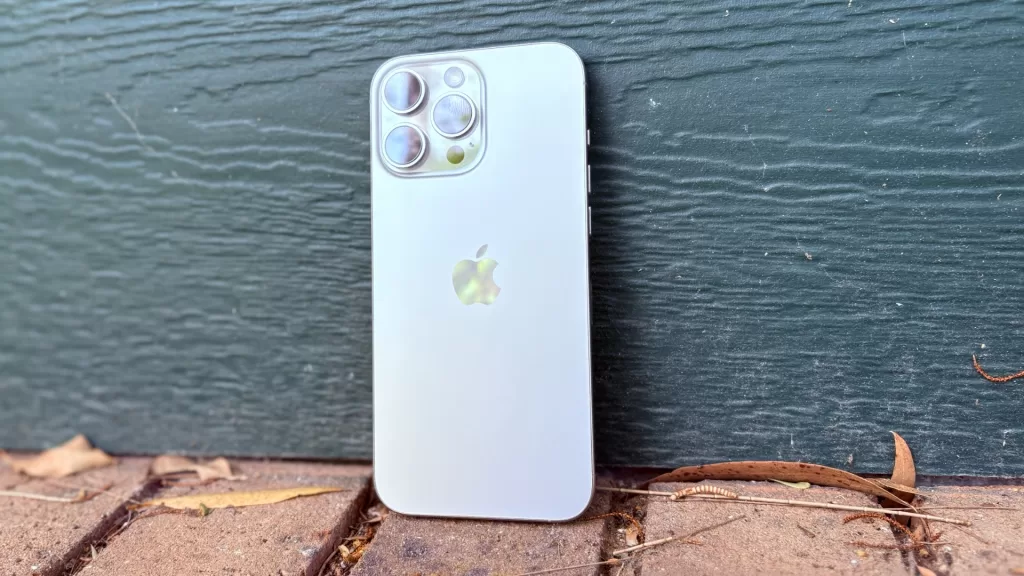
Is the iPhone 16 Pro Max the best iPhone Apple's produced to date?
Undeniably. If you want the biggest and fastest iPhone money can buy right now, this is the one to get. In the wider smartphone hierarchy, it's also the most powerful, its cameras are right up there with the very best and the wider iOS ecosystem really does make use of its immense processing power.
However, it's also seriously expensive, not that this is some new development for Apple phones generally. The jury has to still be out on Apple Intelligence, which could make it a must-have or a never-for-me prospect for differing groups of users. The Camera Control is an interesting idea, but I really do feel like it's trying to solve a problem that didn't really exist in the first place.
Is this a phone that will tempt the Android hardcore to switch camps? Probably not. What about if you're an iPhone fan looking for an upgrade? This will fit the bill, but I can't help but notice that the iPhone 16 (or the Plus if you wanted a larger display) are significantly cheaper and not a whole lot slower than the Pro/Pro Max lines -- so they might be the better general consumer option.
Apple iPhone 16 Pro Max: Pricing and availability
The Apple iPhone 16 Pro Max retails in Australia for $2149 (256GB), $2,499 (512GB) or $2,849 (1TB).
 |
Buy The Apple iPhone 16 Pro Max! | Buy On Amazon |
Was this review useful to you? Support independent media by dropping a dollar or two in the tip jar below!





